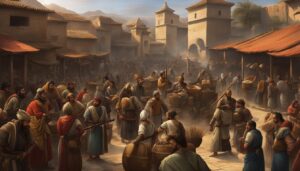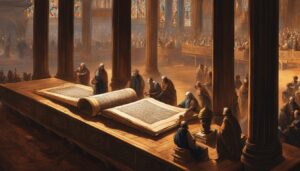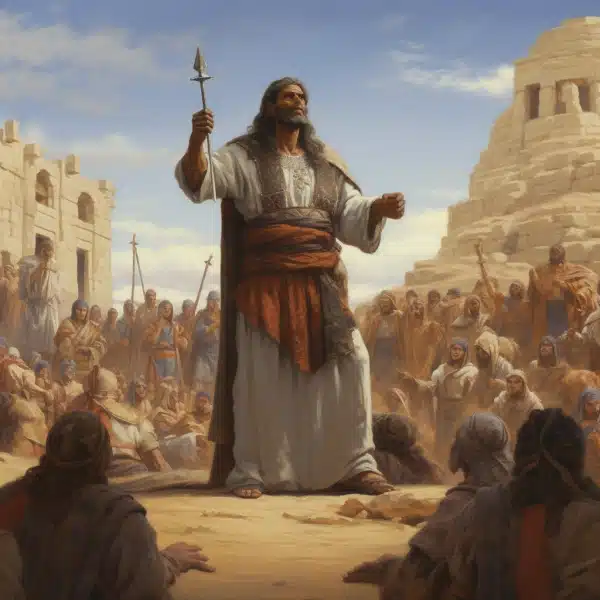
In this section, we will explore the ancient customs and traditions found in the Bible. We will examine specific passages and delve into their cultural context to gain a deeper understanding of these practices. By doing so, we can enrich our spiritual journey and gain historical insights into the biblical narrative.
Key Takeaways
- Ancient customs and traditions in the Bible provide historical and cultural context for interpreting Scripture.
- Understanding these customs enhances our spiritual journey and appreciation of the biblical narrative.
- Examining specific passages helps us gain deeper insights into ancient practices.
- Interpreting the Bible requires humility and recognition of the differences between ancient and modern perspectives.
- Applying the lessons learned from ancient customs to our lives today can bring greater wisdom and understanding.
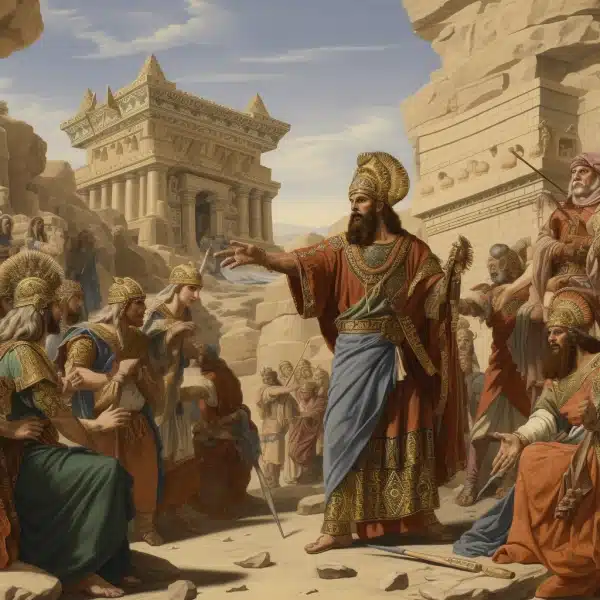
The Stubborn and Rebellious Son: A Deterrent Punishment
People often misunderstand the story of the stubborn son in Deuteronomy 21:18. The passage says that if a son disobeys his parents, is a glutton, and a drunkard, the parents can bring him before the town elders. If everyone agrees, they can stone him to death. People in the past thought it was important to obey parents. Not obeying was bad for everyone. The punishment in Deuteronomy 21:18-21 was extreme to show how serious it was and to discourage others from doing the same thing.
“The punishment for the stubborn and rebellious son was designed to discourage disobedience and maintain the social fabric of the community.”
During Biblical Times
The Bible’s laws are not strict rules, but guidelines for justice and order. The punishment for a stubborn and rebellious son aimed to prevent disobedience and maintain societal harmony. This encouraged discipline and obedience, making children responsible members of society. By examining the cultural context, we can see the message is respect for authority and consequences of disobedience. Though harsh now, it reflects ancient values and societal norms of biblical times.
Biblical Cosmology: Ancient Views and Interpretations
The Bible has a unique way of explaining the universe that reflects the beliefs of ancient times. To understand it fully, we need to look at how people in the past thought about the cosmos. The Bible talks about a three-tiered universe made up of a flat land, a firmament, and waters below. This idea is found in different parts of the Bible. People long ago thought the earth was flat and had water all around it. They believed a solid dome or firmament was above it, separating the sky from the land. They thought the firmament had gates where rain would come through. It also believed there were pillars holding up the water below, which they called “foundations of the earth.”
Scientists challenged old beliefs. People tried to combine Bible and science. Some saw Bible as metaphorical. Others tried to match Bible with science. This caused different interpretations of the universe in the Bible.
Ancient Views of the Universe
In the table below, we summarize the main characteristics of ancient cosmology as described in the Bible:
| Component | Description |
|---|---|
| Flat Earth | The earth was perceived as a flat disc, often described as having four corners or edges. |
| Firmament | A solid dome that separated the earthly realm from the heavens. It was believed to have gates or windows through which rain would fall. |
| Waters Below | It was believed that there were waters under the earth, held back by pillars or foundations. |
| Heavenly Bodies | The sun, moon, and stars were thought to be located within or above the firmament. |
By understanding the ancient views of the universe presented in the Bible, we can better appreciate the cultural and historical context of the biblical text. It is important to approach biblical cosmology with an awareness of its ancient origins and to interpret it within the larger narrative and theological framework of the Bible.
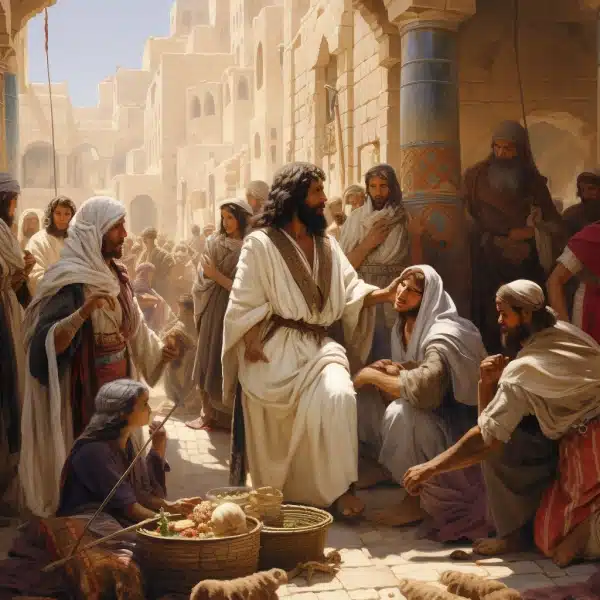
Conclusion
To understand the Bible and apply it to our lives, we must understand ancient customs. We can do this by examining specific passages and historical context. This will give us insights into cultural practices and enrich our spiritual journey.
FAQ
What is the purpose of understanding ancient customs in the Bible?
Understanding ancient customs in the Bible helps us gain a deeper understanding of the biblical narrative and the cultural practices of the time. It allows us to interpret the Bible more accurately and apply its teachings to our lives today.
What is the punishment for a stubborn and rebellious son according to Deuteronomy 21:18?
According to Deuteronomy 21:18, if a son continually disobeys his parents and is a glutton and a drunkard, the parents can bring him before the elders of the town, and if all parties agree, the son could be stoned to death. However, it is important to note that there is no record of this punishment being carried out. The purpose of this punishment was not to promote violence, but to serve as a deterrent for disobedience.
What is biblical cosmology?
Biblical cosmology refers to the ancient views of the universe as presented in the Bible. It reflects the understanding of the cosmos during biblical times and includes the concept of a three-tiered cosmos with a flat land, a firmament, and the waters below.

